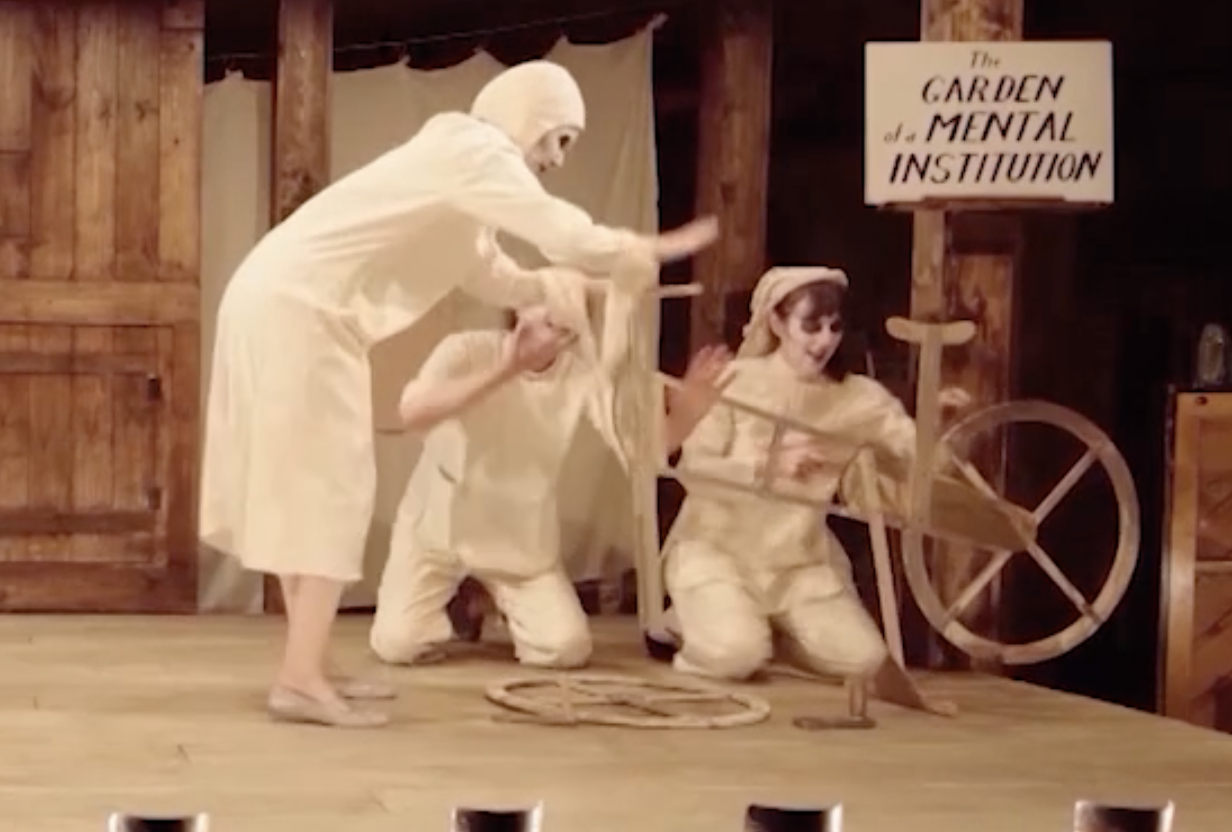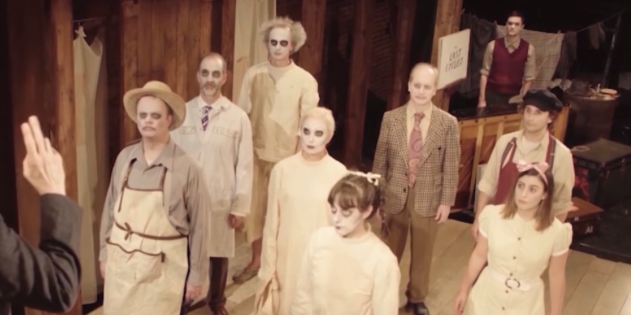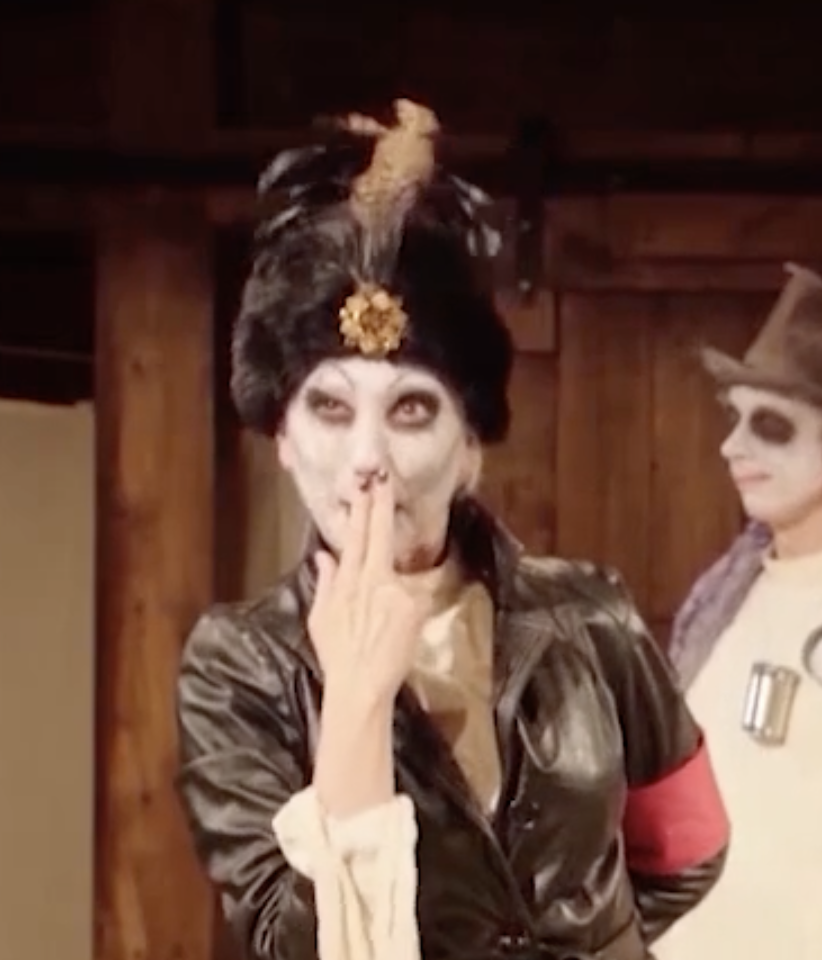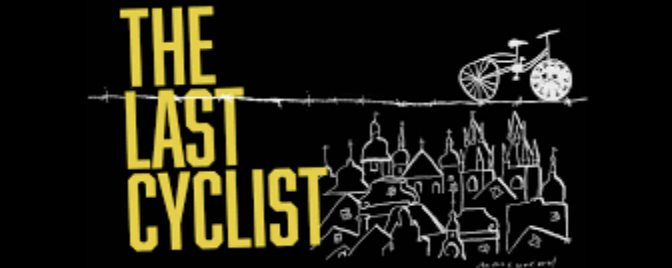An Allegory Too Hot for the Nazis
By Sue Weston and Susan Rosenbluth – Two Sues On The Aisle
The Last Cyclist is a play written and performed at the Nazi-forced labor camp, Terezin Ghetto. This satire bears witness to extent of control exerted through deception, and the duplicity that the prisoners experienced under the Nazi regime. Although it was intended for the entertainment of the prisoners, the Jewish Elders would not allow it to be performed, an indication that it hit too close to home, and would enrage their Nazi captors.
Despite being banned and lost, this squeaky wheel could not be silenced.
In 1995, Naomi Patz, playwright/producer reconstructed The Last Cyclist, a play written by Karel Svenk in 1944 Terezin. Patz set The Last Cyclist as a play within a play.
As if reaching out from the dead, The Last Cyclist provides a living memorial to the brave and talented souls who dared to poke fun at the Nazis.
The Last Cyclist is an absurd comedy that blames bicyclists for all of society’s ills, systematically hunting and murdering them, a parallel to the Nazis targeting the Jews.
It begins with the survivors introducing us to life in Terezin Labor Camp where it was common for prisoners to stage performances to entertain themselves. In Terezin, the Nazi guards turned a blind eye to cultural events, plays, music, and education. Although the prisoners of Terezin understood the political situation, they were ignorant about the death camps, and crematory ovens waiting for them.
The Last Cyclist courageously pokes fun at the Nazi regime, making the audience laugh, naively, without fear of consequence.
An actor using a comb to create a Hitler mustache speaks in with a heavy German accent to the masses, the inmates of an asylum. ‘My fellow citizens, our country is in crisis. We must rid ourselves of the monstrous perversion that is destroying society. Who is to blame for all our troubles? The Jews!’ A voice from the back adds ‘And the Cyclist.’ When asked ‘Why the Cyclist?’ he replies, ‘Why the Jews?’ and so the play begins.
A Parody
Beginning by leading an escape from the asylum, the lunatic leader adopts Hitler’s characteristics, adding two fingers beneath her lip for a mustache, later introducing the classic arm raise and goose step. There is little doubt of the parallels. The language of hate, initially focused on a bicycle-riding physician, slowly extends to all cyclists, and then to all generations. The punishment is banishment to Horror Island where they will be starved to death for the good of society. This offers a subtle inkling that they may not have fully grasped the vision of total extermination.
Although there is no overt mention of Hitler or Nazis in the play, the references are clear, and the message is frightening. The Last Cyclist warns against the dangers of herd-like behavior and fear of reprisals. This mindset created anti-cyclist hysteria and an outcry for the elimination of all cyclists and their families.
Surviving Terezin
Terezin was a walled garrison town located 40 miles from Prague, which was transformed into a Jewish work site and staging area for transports to the death camps in Poland – Auschwitz, Chelmno, Treblinka, Maidanek, Sobibor, and Belzec. Terezin housed the intellectual Jewish elite of Western and Central Europe, painters, writers, composers, musicians, scholars, and their families. It was a creative environment where culture was allowed to flourish as their captors turned a blind eye.
Only 15 percent of the over 141,000 Jews imprisoned in Terezin between 1941 and 1945 survived the war. Karel Švenk the playwright was not among the survivors. Švenk was transferred to Meuselwitz, a subcamp of Buchenwald where he died at age 28 on the death march weeks before the end of the war.
The Last Cyclist survived because Jana Šedová, an actress in the play, was able to recreate the play from memory 17 years later. She modified the second act to fit the communist ideology of the era. Her adaptation was performed in Prague in honor of the 40th anniversary of the Czech communist party. Four years later, an essay on theater in Terezín featured The Last Cyclist, Naomi Patz discovered what Šedová described as “our most courageous production.”
No Doubt, They Understood
The Last Cyclist is a reminder of how quickly society can dis-evolve due to fear mixed with conformity. This message resonates as clearly today as it did in 1944. While allegiance and acceptance are important human qualities, it is difficult to comprehend the demented cruelty that can result in ordering the extermination of a people.
In a quirk of happenstance, The Last Cyclist is saved by an accident that sends the lunatics in a rocket to the moon. He tells the audience, “Go home! You are free!” but his girlfriend objects: “Only here on the stage is there a happy ending. Out there, where you are, the rule of madness continues.”
***
Two Sues on the Aisle bases its ratings on how many challahs (1-5) it pays to buy (rather than make) in order to see the play, show, film, or exhibit being reviewed.
The Last Cyclist received a 5-Challah rating











